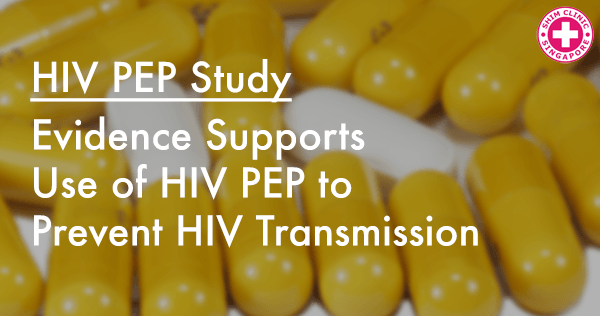Several researchers conducted a review that was published by Dove Medical Press in 2014 providing current evidence for the use of HIV Post-exposure prophylaxis after sexual exposure to HIV (PEPSE) to prevent HIV transmission. The review also summarizes national and international guidelines for the use of PEPSE.
Rationale for PEP
It usually takes up to 72 hours for HIV to be detected in regional lymph nodes offering a window of opportunity to prevent HIV transmission following exposure by stopping viral replication or dissemination of infection through post-exposure prophylaxis (PEP) therapy. There exists data analyzing the use of PEP for occupational exposure as well as mother-to-child transmission forming the base for HIV PEP. This data also reveals that PEPSE is likely to be effective.
Human Studies
The review illustrates studies that show a reduction in mother to child transmission of HIV when infected pregnant women use antiretroviral treatment, supporting the efficacy of PEP. Another study showed reduced incidence of HIV in newborns given 6 weeks of zidovudine (a type of PEP) within 48 hours of delivery. A case-control study of health care workers exposed to HIV in the line of duty also demonstrated that a 28-day course of zidovudine reduced the risk of transmission.
Efficacy of PEPSE
The review also talks about an observational PEPSE study undertaken in Brazil among men having sex with men (MSM) who were given PEP after a high-risk exposure. These men demonstrated fewer HIV seroconversions among those who took PEPSE compared to those who did not. Efficacy has been seen to improve in cases where the HIV status of the source individual is known because it makes it easy to determine the risk of HIV acquisition for the person exposed.
Factors That Influence the Efficacy of PEP
Reports of individuals acquiring HIV following both occupational and sexual exposures, despite the use of PEP, have been documented meaning PEP is not 100% effective.
Various factors that influence PEP effectiveness include:
- Time to starting PEP
- Incomplete adherence/non-completion
- Source virus
- Penetration of drugs into tissue compartments
- Further high-risk sexual exposures
Current guidelines for PEPSE
Guidelines for starting and using PEPSE differ from one region to another. For instance, UK and US guidelines advise starting PEP before 72 hours of exposure, whereas the European AIDS Clinical Society (EACS) recommends starting before 48 hours of exposure. All guidelines, however, recommend the use of PEPSE after unprotected anal or vaginal sex with someone known or likely to have HIV.
The researchers have recommended that STD clinics broadly follow their own national or regional guidelines for PEP provision. They are also of the opinion that three-drug PEP regime still remains the better option but suggest that in the event of significant toxicity, drug intolerance or difficult drug–drug interactions common with the three drugs regime, the dual-PEP with two NRTI is an acceptable option. This is because of better tolerability and fewer drug interactions when using dual-PEP RAL. In fact, several clinics in the UK have already switched to RAL-based PEP as their first-choice regimen.
From the review, clearly, PEPSE provides a larger HIV prevention strategy and should be made part of other preventative measures such as condom use, frequent HIV testing and STD tests for high-risk individuals, counseling, and behavior change support in order to reduce future risk.
The research paper can be found here: https://www.dovepress.com/current-perspectives-in-hiv-post-exposure-prophylaxis-peer-reviewed-article-HIV

